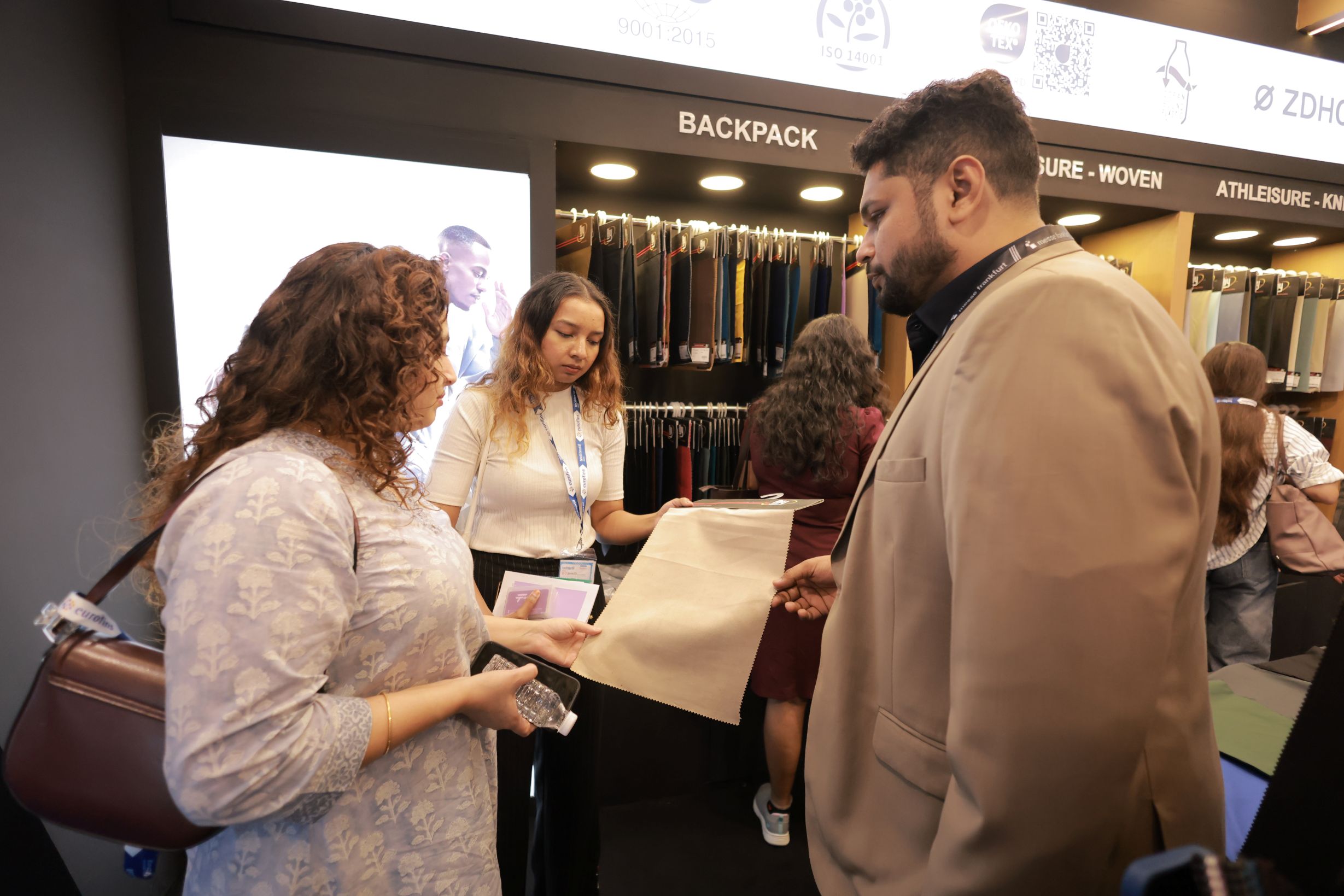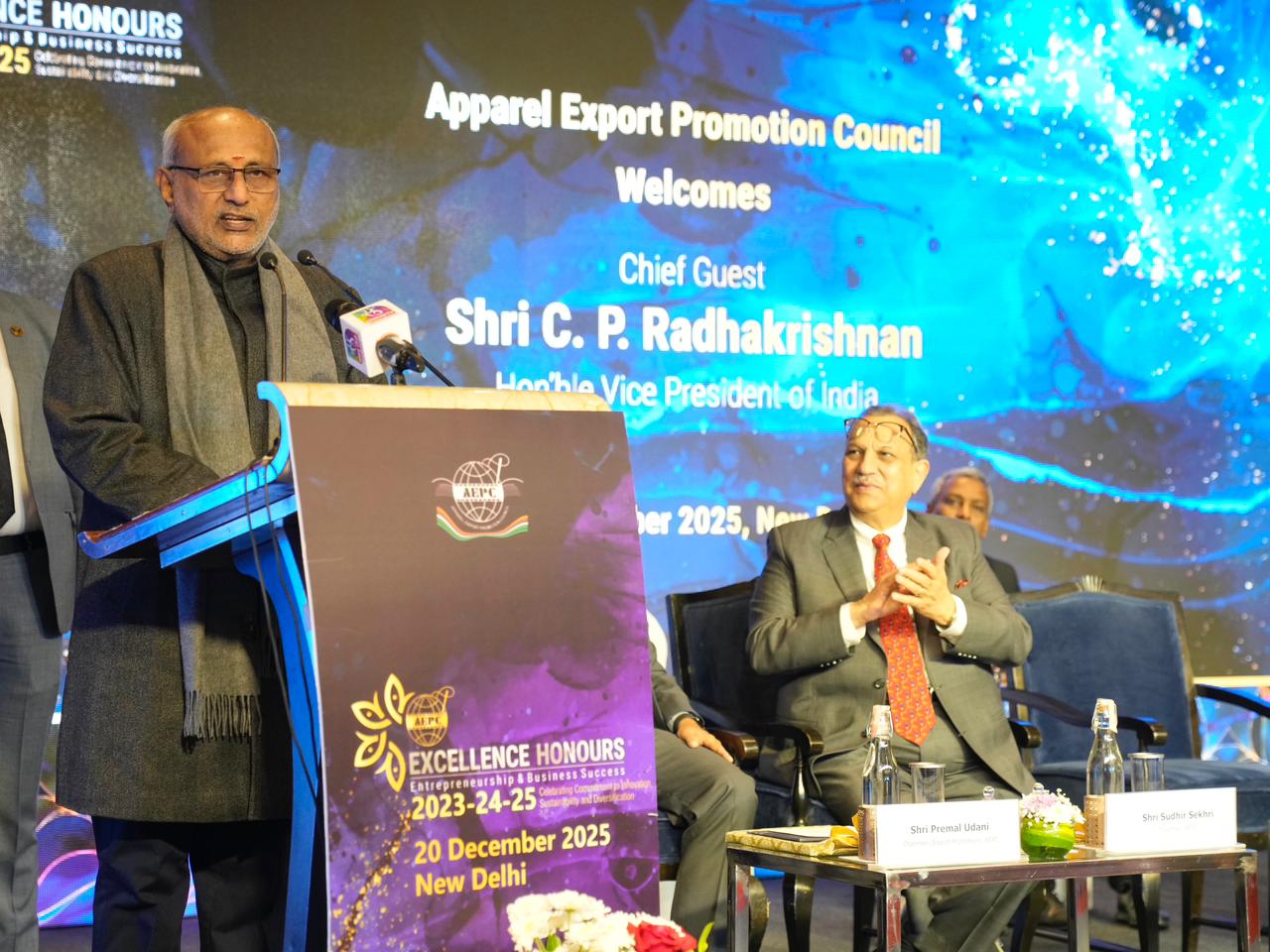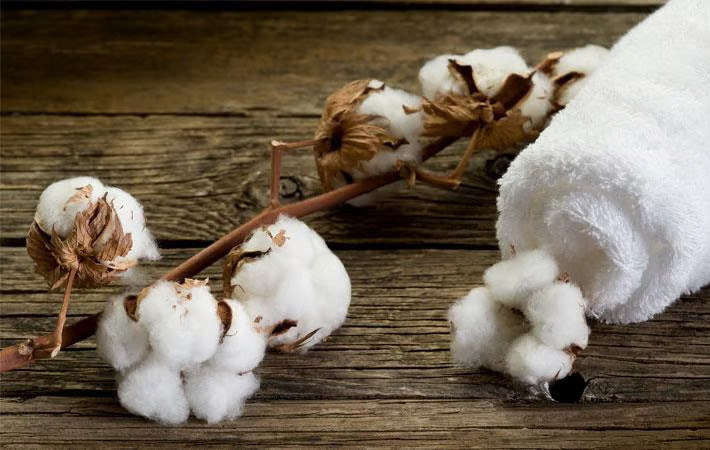FW
Factors such as rupee appreciation, higher cotton prices, higher MSP have affected the textile industry in India. The rupee appreciation affected revenues of textile players as for many of them a major chunk of revenue comes from exports. Rising cotton prices following the pink bollworm infestation in the cotton crops affected margins of major textile players. Cotton prices witnessed volatility of 19 per cent (annualised) and with the physical market size of cotton estimated at around Rs 68,000 crores, the cotton industry faced an annualised price risk of over Rs 13,000 crores.
Players like Vardhman Textiles started hedging on the Multi Commodity Exchange of India to cope up with the persistent volatility in cotton prices. The readymade garment industry is the largest contributor to the country’s textile exports and employs about 12 million people now. The country’s textile industry currently generates about $150 billion in annual revenues — $110 billion from the domestic market and $40 billion through exports. The sector contributes four per cent to India’s GDP, is one of the largest sources of employment generation in the country and accounts for 14 per cent of exports.
India aims at doubling the annual revenue of the textile industry in the country by 2025.
The GSP Plus status granted by the European Union has helped Pakistan increase exports of value-added textile goods by up to 90 per cent, leading to an export growth of 13 per cent during the last eight months. The package given to exporters in the shape of duty drawback on taxes has also helped the growth of textile exports.
Currently, the garment sector has a limited product line for the export market. But buyers demand new garments based on G3, G4 and technical fabric materials. So, Pakistan has to offer more diversified products to take benefits from GSP Plus. Under GSP Plus Pakistan goods have duty free access to 28 EU member states. The GSP (Generalised System of Preference) Plus facility allows almost 20 per cent of Pakistan exports to enter the EU market at zero tariff and 70 per cent at preferential rates. Duty free access helps Pakistan products to compete with products originating from Bangladesh, Vietnam and Turkey and many other countries.
Suppliers of about 40 per cent of the world’s raw cashmere Mongolia, hopes to increase profit trading in the wool used in some of the world’s priciest luxury fashions by opening up a new online platform for global buying via China’s Bohai exchange.
According to the Mongolian Commodity Exchange (MCE) the platform will begin trading in mid-April. Trading in agricultural products and also coal and copper could follow at a later date. But cashmere currently accounts for around 90 per cent of the exchange’s total trade: In 2017, 7,000 tonnes of washed cashmere were sold on the MCE with a total value of 521 billion tugrik ($217.99 million).
Chuluunbaatar Bayar, GM, MCE stated that cooperation with the Bohai Commodity Exchange is opening up a market for Mongolian commodities not only in China but to other countries as well. He further added Italian buyers would be able to buy Mongolian cashmere via the Bohai exchange. The cashmere launch follows the signing of a strategic cooperation agreement with the Bohai Commodity Exchange (BOCE) in January. BOCE already trades a variety of textile products including cotton, cashmere, goose feathers and eiderdown.
Mongolia has maximized profit from its cashmere industry, by processing cheaply across the border in China. The Mongolian government launched a four-year program to boost the industry in February, with the aim of increasing exports more than fivefold, providing financial support to help domestic firms improve technology and boosting the country’s processing capacity.
Mongolia has an estimated total of 27 million goats, and an annual cashmere production capacity of 9,400 tonnes.
India will export 70 lakh bales of cotton in the ongoing season amid aggressive demand from countries like Bangladesh, Pakistan and China and also countries like Vietnam, Indonesia and Turkey. Buyers are interested in sourcing cotton from India as they find it cost effective and less expensive compared to other countries.
So far, India has sold 55 lakh bales of cotton, of which 17 lakh bales have been shipped to Bangladesh, followed by 11 lakh bales to Pakistan, ten lakh to Vietnam, seven lakh to China, seven lakh to Indonesia and Taiwan, and three lakh to other countries including Sri Lanka, Turkey and Thailand. India has already shipped nearly 55 lakh bales in the current season and contracts have been signed for another ten lakh bales scheduled for shipment in April-May. India exported 63 lakh bales of cotton last year.
Bangladesh, the world's largest cotton importer, does not have much of its own production and its spinning mills largely depend on imports. India is the largest producer of cotton in the world with 365 lakh bales this year, followed by China, the US, Pakistan and Brazil. The five major consumers of cotton are China, India, Pakistan, Bangladesh and Turkey.
Panorama Berlin will be held from July 3 to 5, 2018. This is a serious forum for the fashion industry. In addition to early sightings of coming trends, industry exchange is an indispensable USP of Panorama Berlin.
Over 800 selected women’s and men’s collections, from contemporary to formal to casual and denim will be expanded with the spring/summer season 2019 through the integration of shoes and accessories as well as lifestyle items, presented in stylistically homogenous worlds.
Around 60 brands covering athleisure and sports fashion will showcase their new spring /summer collections for 2019. Two seasonal themes (yoga and beachwear) will round off the offer. The Retail Solutions area will offer a new platform for the whole world of possibilities to optimize stationary retailing. From digital solutions and gastronomic franchise concepts to shop fitting and merchandising, another area will bring together service providers and tools that will turn trade in fashion into action. Short lectures and panels will provide further insights and ideas.
The range of the eco-fashion format Xoom for sustainable fashion will be expanded. Selvedge Run will remain an integral part of Panorama Berlin. This time the slogan for the show is Connecting Communities.
Global Fashion Agenda, a leadership forum on fashion sustainability around the Copenhagen Fashion Summit launched the inaugural, sustainability-centered CEO Agenda. It has been developed with fashion titans such as Kering, H&M, Target, and Li & Fung and makes a case for change.
Eva Kruse, CEO, Global Fashion Agenda says fashion is one of the largest industries in the world, but also one of the most resource and labor intensive. The environmental, social and ethical challenges the industry faces today are not only a threat to the planet, but also a threat to the industry itself. That’s why there’s no alternative but for sustainability to become an integral part of any company’s business strategy.
The CEO Agenda 2018 spells out seven priorities that should be top of mind for any CEO in fashion right now. Three priorities for immediate implementation include supply chain traceability; efficient use of water, energy and chemicals; respectful and secure work environments, etc. Apart from this, there are four transformational priorities for fundamental change in the long run. These include sustainable material mix; closed-loop fashion system; promotion of better wage systems; and fourth industrial revolution.
India’s textile and garment exports are likely to fall short of targets for 2017-’18.
During April to February 2017-18, exports of readymade garments fell 6.25 per cent over the same period last year. In February alone, shipments witnessed a steep 13.86 per cent fall.
A worrying factor is the backdoor entry of Chinese fabrics into the Indian market via Bangladesh.
Another negative factor is that the effective duty drawback has come down for the sector post implementation of GST, thereby hitting export margins. Although the remission of state levies and the Merchandise Exports from India Scheme rates were tweaked late last year, a two per cent gap still exists, which is crucial in a single digit margin industry. Moreover, refunds are getting delayed or blocked and the financial crunch is taking a toll on the capital intensive industry.
China, which is the largest market for cotton yarn, has imposed a 3.5 per cent import duty on yarn from India under the Asia Pacific Trade Agreement, while duty free access is given to Vietnam. This has led to a large capacity expansion in yarn manufacturing in Vietnam, which has surpassed India to become the largest supplier of cotton yarn to China.
As a result, India’s cotton yarn exports to China have decreased by 49 per cent, while Vietnam’s exports of cotton yarn to China have increased by 88 per cent.
The European Union is tackling industrial pollution with a new initiative designed to yield a more sustainable textile sector. An innovation observatory project is being introduced aimed at improving this process and reducing industrial pollution in Europe. The innovation observatory, which will operate through 2020, requests stakeholders to submit better information on emerging techniques—methods that ensure an equivalent or higher level of environmental protection than existing techniques.
Industrial pollution accounts for a large share of Europe’s overall pollution problem, thanks to the emission of air pollutants, discharges of wastewater and waste generation. One goal of the observatory will be to document complete information on emerging techniques and track the latest innovation cycles that could help the EU’s environmental goals. From there, the focus will be on engaging with a more comprehensive set of stakeholders involved in the review process to improve the level of information captured, which should ultimately lead to the adoption of new, better techniques.
With the observatory, the EU and related stakeholders can identify novel emerging ideas and assess their progress to improve overall sustainability in Europe’s textile sector. The project also aims to yield two databases, a stakeholder database and a novel technique database. The stakeholder database will involve a set of industrial technologies experts, while the novel technique database will highlight a set of emerging techniques on industrial activities.
Textile Asia was held in Pakistan from March 27 to 29, 2018. More than 450 companies showcased 650 products at the exhibition. Exhibitors from Korea, France, Germany, Italy, Vietnam, Turkmenistan and Portugal were present. The event witnessed 75,000 trade visits.
Chinese companies participated in large numbers and they made deals worth millions. Many Chinese companies expressed their willingness to relocate textile factories to Pakistan. The Chinese are planning to move with the latest technology and skills by making joint ventures with local companies.
The presence of Chinese companies in Pakistan is increasing following the initiation of the China-Pakistan Economic Corridor. This year Zhejiang province was the most prominent exhibitor with 150 companies displaying their products. European companies also displayed high-tech textile machinery at the exhibition. A company from Portugal displayed high quality threads for denim and successfully achieved business deals with local manufacturers.
Indian textile machines were also displayed at the exhibition through Pakistan representatives. Textile Asia is a landmark event, which has provided an effective podium for joint ventures and collaborations among the local textile industry and international entrepreneurs.
Pakistan is considering reducing gas and water tariffs to lower production costs and make local companies competitive in the international market.
"The outgoing chairman of National Council of Textile Organizations (NCTO), a Washington, DC-based trade association that represents domestic textile manufacturers, William V ‘Bill’ McCrary Jr. delivered the trade association’s 2018 State of the US Textile Industry overview at NCTO’s 15th Annual Meeting on March 22. He highlighted the US President Trump’s pro-manufacturing agenda is forcing Washington to do what NCTO has long sought – rethink policies on trade, taxation, regulatory reform and a host of other issues. He asserted that the time for change is now and NCTO is committed to working with the Trump administration to achieve the best policy outcomes on these and other issues."

The outgoing chairman of National Council of Textile Organizations (NCTO), a Washington, DC-based trade association that represents domestic textile manufacturers, William V ‘Bill’ McCrary Jr. delivered the trade association’s 2018 State of the US Textile Industry overview at NCTO’s 15th Annual Meeting on March 22. He highlighted the US President Trump’s pro-manufacturing agenda is forcing Washington to do what NCTO has long sought – rethink policies on trade, taxation, regulatory reform and a host of other issues. He asserted that the time for change is now and NCTO is committed to working with the Trump administration to achieve the best policy outcomes on these and other issues.
Fact file

In 2017, the value of US man-made fibre and filament, textile, and apparel shipments was an estimated $77.9 billion. US exports of fibre, yarns, fabrics, made-ups, and apparel were $28.6 billion in 2017. This is nearly a nine per cent increase in export performance over 2016. Shipments to NAFTA and CAFTA-DR countries accounted for 54 per cent of all US textile supply chain exports. The US is especially well-positioned globally in fibre, yarn, fabric, and non-apparel sewn products markets; it was the world’s 4th largest individual country exporter of those products in 2016. The US textile industry’s commitment to capital re-investment and a continued emphasis on quality and innovation make it well-positioned to adapt to market changes and take advantage of opportunities as 2018 moves along."
Policy matters
McCrary Jr said, for decades, US policy systematically undervalued the importance of domestic manufacturing, and President Trump is right that this has hurt America. NCTO endorses President Trump’s macro policy objectives of reshoring industry, fighting for free, but fair trade, enforcing US trade laws, making the US tax code more competitive, buying American, cutting unnecessary regulation, revitalising infrastructure, ensuring cheap energy, and fixing health care. On trade, NCTO agrees with President Trump that US trading relationships must be rooted in fairness and reciprocity to benefit a broad swath of American society.
America’s most important trading relationship is NAFTA, a pillar upon which the US-Western Hemisphere textile supply chain is built. At almost $12 billion combined, Mexico and Canada are the US textile industry’s largest export markets. Moreover, Mexico provides vital garment assembly capacity the United States lacks at this time. NAFTA’s yarn-forward rule of origin contains loopholes that benefit third-party countries, such as China. Closing them would boost US and NAFTA partner textile and apparel production and jobs.
Priority areas
NCTO urges continued support for the Advanced Functional Fabrics of America (AFFOA). This defense department-funded program is matched three to one with private dollars and tasked with making it easier to develop and commercialise the next generation of high-performance textiles. NCTO also calls for the US Government to invest in improving automation for garment assembly because this technology shows promising potential to reshore US textile and apparel production and jobs.
Another NCTO priority is ensuring the US textile industry has uninterrupted access to reasonably priced energy. Most man-made fibres are derivatives of petroleum products and many textile producers are reliant on natural gas to power manufacturing operations. Noting this, NCTO supports construction of expanded oil & gas pipeline capacity to keep energy prices low. Finally, the US textile industry must acknowledge its workforce is aging, making the recruitment of new talent a priority. US companies must continue to forge links with local and state leaders, and educators to make sure government policy nurtures a labour pool both adequate in size and well prepared to succeed in a competitive global economy.
Future expanse
Although the US textile industry is world-class, it cannot afford to rest on its laurels. There will always be intense and sometimes unfair competition from abroad, changing consumer demands and inevitable economic downturns. Fortunately, the Trump administration wants to spur manufacturing output and jobs, and it is incumbent upon the US textile industry to seize this generational opportunity to usher in a new era of growth. With so much at stake, the chairman urged all members of NCTO to stay active in this indispensable association that is fighting to promote the interest of the industry in Washington.












